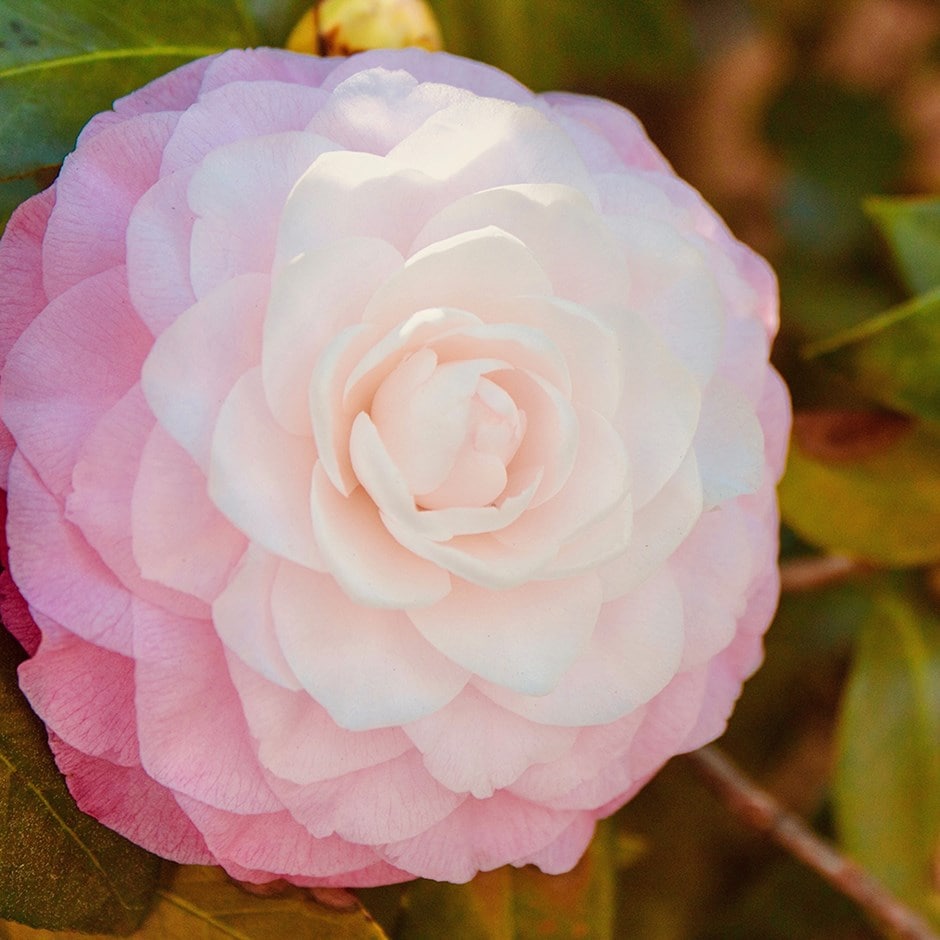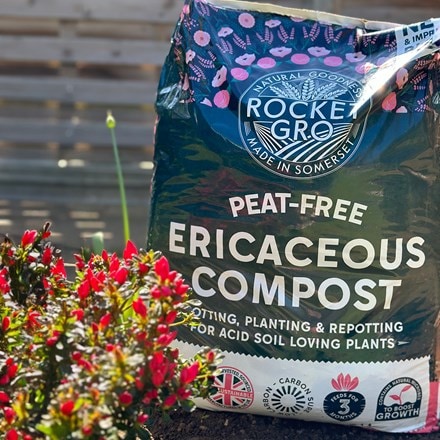Camellia japonica 'Nuccio's Pearl'
camellia
- 2 litre pot
- £24.99
- available to order from autumn
Delivery options
- Standard £5.99
- Position: partial shade
- Soil:humus-rich, moist, well-drained acid soil or ericaceous compost for containers
- Rate of growth: average
- Flowering period: February to March
- Hardiness: fully hardy
Camellia japonica'Nuccio's Pearl' is a compact, upright, medium-sized evergreen shrub with double flowers, approximately 8cm (3in) across. The petals, with rounded shapes and pointed tips, appear from February to March and exhibit a charming blend of white with a pink flush, with darker hues on the outer petals. A very garden worthy plant and a recipient of the RHS Award of Garden Merit.
Plant spring-flowering camellias in acidic, humus-rich, moisture-retentive soil with good drainage. Choose a sheltered spot in partial shade, ideally out of cold, drying winds and away from early morning sun, which can scorch flower buds.
Container-grown plants should be potted into ericaceous compost and kept well-watered, especially in dry spells, to prevent bud drop. Ensure good drainage in the pots to avoid waterlogging. Avoid allowing them to dry out in late summer, as this is when flower buds are forming for the following year.
Feed established plants with a balanced liquid (and preferably ericaceous) fertiliser in mid-spring and again in June. Apply an annual top-dressing of leaf mould or shredded bark to help retain moisture and maintain soil acidity. Pruning is generally minimal — after flowering, trim lightly to remove any dead or straggly growth and to maintain a neat shape.
For container plants, insulate pots in winter with bubble wrap or hessian to protect roots from freezing temperatures.
Container-grown plants should be potted into ericaceous compost and kept well-watered, especially in dry spells, to prevent bud drop. Ensure good drainage in the pots to avoid waterlogging. Avoid allowing them to dry out in late summer, as this is when flower buds are forming for the following year.
Feed established plants with a balanced liquid (and preferably ericaceous) fertiliser in mid-spring and again in June. Apply an annual top-dressing of leaf mould or shredded bark to help retain moisture and maintain soil acidity. Pruning is generally minimal — after flowering, trim lightly to remove any dead or straggly growth and to maintain a neat shape.
For container plants, insulate pots in winter with bubble wrap or hessian to protect roots from freezing temperatures.

